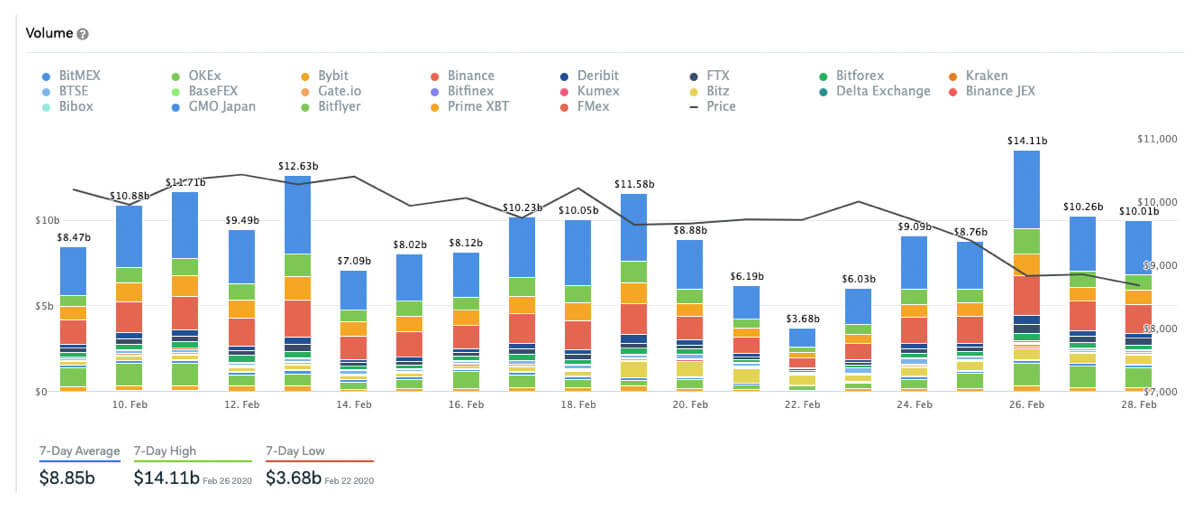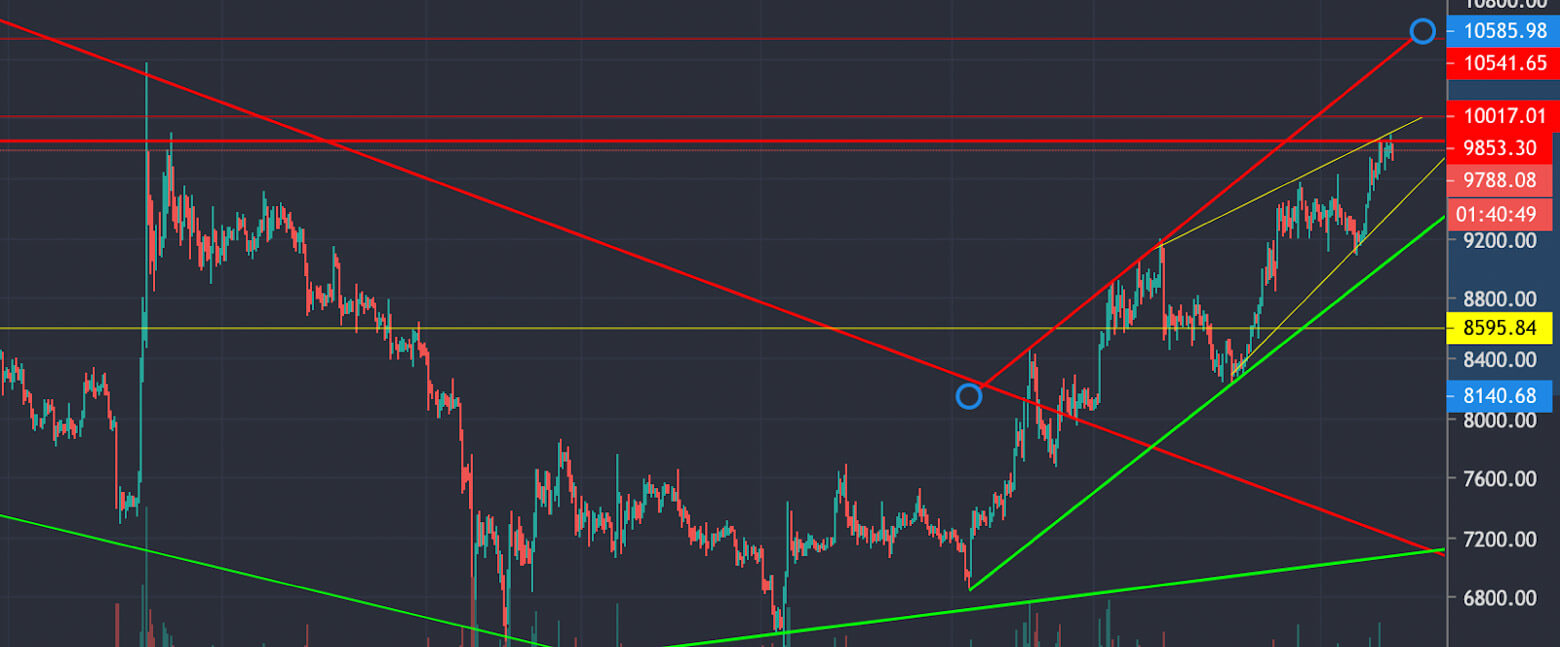2020-11-5 10:20 |
Powered by
Every week, IntoTheBlock brings you on-chain analysis of top news stories in the crypto space. Leveraging blockchain’s public nature, IntoTheBlock’s machine learning algorithms extract key data that provide a deeper dive into the major developments in the industry.
This week we take a step back to cover Bitcoin’s long-term trajectory as it celebrates its 12th year anniversary. We cover some of the most representative metrics of Bitcoin’s trajectory since its inception. As well, we provide a more short-term outlook on Bitcoin as it reaches $14,000 on the U.S. election day.
Bitcoin’s 12-Year EvolutionOn Oct. 31 2020, Bitcoin’s original white paper by Satoshi Nakamoto turned 12 years old. Since its inception, Bitcoin’s use cases and narratives have shifted significantly, from peer-to-peer cash to anonymous darknet currency to digital gold, just to name a few. Throughout these changes, growth has been a constant in both price and key metrics. Along with this, support from miners and institutional players has managed to increase consistently throughout Bitcoin’s journey.
A key progression Bitcoin has seen over the past few years is its transition from a global currency to a store of value asset. Given Bitcoin’s high volatility in comparison to developed countries’ currencies, it is ill-suited as a stable medium of exchange.
Similarly, its price growth and deflationary supply schedule incentivize long-term holding of Bitcoin rather than spending in mundane transactions such as buying a coffee. After all, who would spend an asset they expect to increase in value?
Bitcoin’s dwindling proposition for payments becomes apparent when looking at its on-chain transactions. The average number of Bitcoin transactions peaked in December 2017 at approximately 400,000 per day.
As of November 3, 2020 using IntoTheBlock’s Bitcoin network analyticsDespite Bitcoin’s volatility being significantly lower in 2020 than in 2017, the number of transactions has stagnated. This suggests that few people are using Bitcoin as a medium of exchange since the (relative) stabilization of its price has not led to higher transaction levels. On-chain data suggests more and more holders are using Bitcoin as an investment than as a currency.
The metric that most closely resembles the number of Bitcoin holders is the total number of addresses with a balance. Though a Bitcoin user may have more than one address, centralized exchanges also tend to aggregate users’ funds into a few addresses. Therefore, the total number of addresses with a balance acts as a valuable approximation to the number of Bitcoin holders. Throughout the last 12 years, the number of Bitcoin addresses with a balance managed to increase in every year except 2018.
As of November 3, 2020 using IntoTheBlock’s Bitcoin network analyticsAs can be seen from the graph above, the number of Bitcoin addresses with a balance is currently at an all-time high of 33.15 million. This trend points to an increasing amount of people investing in Bitcoin, accelerating in recent months. Furthermore, by classifying these addresses by their holding time, we can determine that most holders see Bitcoin as a long-term investment.
Bitcoin’s unspent transaction outputs (UTXOs) serve as a system to account for ownership of Bitcoin and avoid double spending. By tracking the age of created UTXOs, we can establish the holding time of Bitcoin addresses. Over the long-term, the percentage of addresses holding for over a year (displayed in colors green to blue) has increased significantly, only diminishing during bubble periods such as 2013 and 2017.
As of November 3, 2020 using IntoTheBlock’s Bitcoin network analyticsThe prevalence of long-term investing in Bitcoin manifests its transition into a store of value asset. At the time of writing, over 64% of Bitcoin addresses have been holding it for over a year. The long-term support from holders points to the common belief that it will appreciate or at least retain its value over time: a key characteristic of a store of value.
Bitcoin’s evolution has led to the development of the so-called cryptocurrency mining sector, ensuring the security of its underlying blockchain. The hash rate — which measures the aggregate power miners devote to solving Bitcoin’s proof of work algorithm — has managed to increase even more than Bitcoin’s price.
As of November 3, 2020 using IntoTheBlock’s Bitcoin network analyticsThis demonstrates the value miners see in Bitcoin, but also the value Bitcoin obtains from its miners. By utilizing their computational resources with specialized equipment to mine Bitcoin, miners are effectively securing Bitcoin’s network. This is the case, for a greater hash rate means that potential attackers require more computational power and larger expenses to attempt to attack Bitcoin’s blockchain. Therefore, the growing hash rate points to Bitcoin’s increased security over time.
Finally, institutional adoption has changed Bitcoin’s panorama in recent years. While traders have been anticipating for years that a Bitcoin ETF would act as a catalyst for institutional players to buy Bitcoin, large funds and corporations have joined Bitcoin’s path regardless. Publicly traded companies such as Square and MicroStrategy have officially added Bitcoin to their balance sheets. Meanwhile, Grayscale’s Bitcoin fund recently saw its largest weekly inflows, leading it to hold over 480,000 BTC or roughly 2.5% of its circulating supply.
On the retail side, Bitcoin has also been boosted by PayPal’s plans to offer its users the option to buy and sell crypto-assets. Overall, Bitcoin has managed to exceed expectations, growing throughout its 12-year history. Throughout this journey, Bitcoin has evolved into a long-term investment by most of its holders, highlighting its transition into a store of value asset. This relatively mature state of Bitcoin has been propelled by the constantly growing support from miners and its appeal to institutional investors.
The Effect of the U.S. Elections in BitcoinBitcoin defied traditional markets in October, climbing approximately 28% while global stocks slumped as election uncertainty and rising Covid-19 cases triggered a sell-off. In the midst of this risk-off environment, Bitcoin has managed to unpeg itself from broader markets, even exhibiting a negative correlation with top market indices.
Bitcoin’s 30-day correlation with markets has fallen significantly since the Covid-induced panic in March, when practically all assets fell. Currently, Bitcoin has been displaying strong negative correlations versus most indices and gold. Recall that a correlation coefficient near -1 points to an inverse relationship between the two variables, while values close to 0 indicate no relationship, and approximately 1 means a strong positive correlation.
The diverging path between stocks and Bitcoin signalled that the elections may not have that big of an impact on Bitcoin. Instead, Bitcoiners believed that Bitcoin stood to benefit from either scenario as long as the federal reserve’s stimulus persisted. However, on Nov. 3 as votes started to be counted, there appeared to be an inverse relationship between Trump’s winning odds and Bitcoin’s price.
Based on FTX’s Trump 2020 contract — which goes to $1 if Trump wins or $0 if he loses — Trump’s odds were at their lowest at 7PM EST right before vote counting began. At that time, Bitcoin was holding above $14,000 near its yearly highs. As the night progressed, Trump’s contract price reached a high of $0.80 at 10PM EST, when Bitcoin price had set an hourly bottom. The U.S. Dollar Index (DXY) followed the same trajectory as the Trump contract, or rather the contract tracked the DXY, as a Trump government is seen as more bullish for the U.S. dollar. This led to a short-term negative correlation between the dollar index and Trump’s odds versus Bitcoin’s price.
At the time of writing, election results have not been settled yet. However, the next levels of price action to watch out for Bitcoin can be identified through IntoTheBlock’s In/Out of the Money.
As of November 3, 2020 using IntoTheBlock’s Bitcoin financial analyticsOver 1.4 million addresses previously bought Bitcoin at a price between $13,380 and $13,780. This is expected to act as an area of strong support given that there has been high buying activity in this vicinity. While clusters of addresses losing money (out of the money) are significantly smaller, Bitcoin has struggled to close above $14,000, the next big level to clear before it can head higher.
As election results settle, Bitcoin may see a clearer path. As explained, Donald Trump’s surprising lead has thus far apparently caused Bitcoin’s price to retrace slightly. While results are far from conclusive at the time of writing, Bitcoin has appeared to be affected by them despite not showing strong correlations with broader markets over the last month.
This article contains links to third-party websites or other content for information purposes only (“Third-Party Sites”). The Third-Party Sites are not under the control of CoinMarketCap, and CoinMarketCap is not responsible for the content of any Third-Party Site, including without limitation any link contained in a Third-Party Site, or any changes or updates to a Third-Party Site. CoinMarketCap is providing these links to you only as a convenience, and the inclusion of any link does not imply endorsement, approval or recommendation by CoinMarketCap of the site or any association with its operators.
This article is intended to be used and must be used for informational purposes only. It is important to do your own research and analysis before making any material decisions related to any of the products or services described. This article is not intended as, and shall not be construed as, financial advice.
The views and opinions expressed in this article are the author’s own and do not necessarily reflect those of CoinMarketCap.
The post Bitcoin’s Long-Term Evolution & US Election Impact: A Data Perspective by IntoTheBlock appeared first on CoinMarketCap Blog.
Similar to Notcoin - TapSwap on Solana Airdrops In 2024
DApp Evolution (EVO) íà Currencies.ru
|
|







